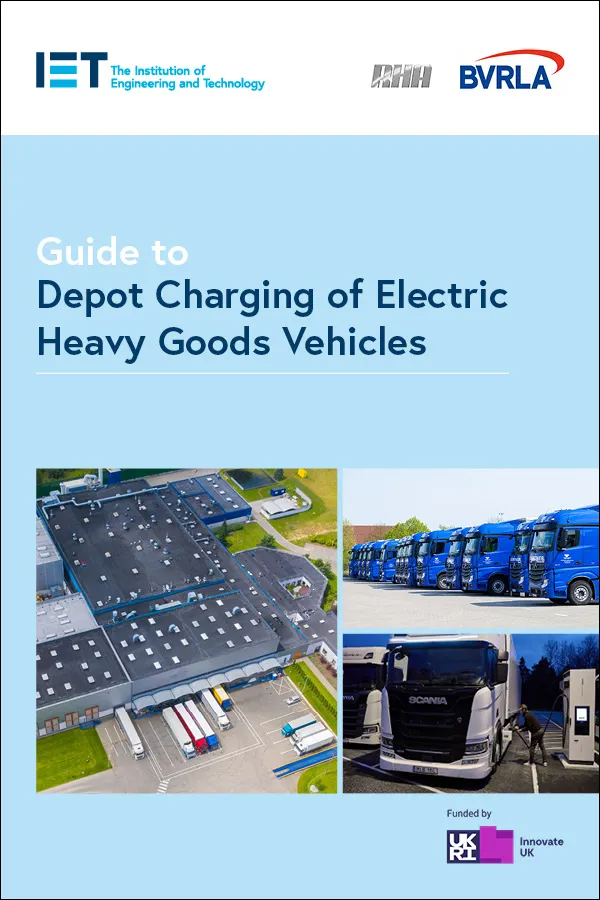Guide to Depot Charging of Electric Heavy Goods Vehicles
The IET has developed guidance to address the needs and considerations around the provision of eHGV charging solutions and the operation of eHGV fleets.
This guidance introduces the main aspects of depot electrification, as well as exploring the key technical and financial aspects. It is a reference to help all organizations concerned with HGV fleet electrification.
For large fleet operators already underway with fleet electrification, this guidance confirms their current activities and helps internal stakeholders across departments to gain a wider understanding of the electrification transition.
For medium-sized fleet operators yet to embark on fleet electrification, this guidance provides initial signposting and raises awareness. It also signals the new knowledge a fleet operator must gain for this transition.
For consultants already providing electrification advice to fleet operators, this guidance should act as a baseline reference.
Why go electric?
There are three main drivers towards fleet operators decarbonising their fleets:
- A moral imperative to do, and be seen to be doing, the right thing.
- Commercial pressure from customers for a reduction in emissions.
- Regulatory pressures – it will increasingly be mandatory to comply with national and local regulations and limits, including clean air and low emission zones.
The guidance includes:
The fundamentals:
- It provides a broad coverage of the eHGV technology and policy landscape, including an overview of current products, concepts, key considerations, terminology, the basics for operation, the organisational impact, new energy considerations and the charging infrastructure value chain.
The technical issues and different charging solutions:
- It’s important to understand depot charging and journey charging, usage profiles, relevant equipment and commercial models (charging as a service, asset ownership, open access), as well as being clear about the various standards in the area.
- The link between vehicle duty/operation, vehicle specifications (EV range/EV battery) capacity/recharging, efficiency and chemistry-dependent attributes, such as lifetime degradation, low-temp effects and the charging solution.
- BAU requirements such as working hours and stop times, routes (distance and topography), stopping locations (depots, customers, en-route), payload, depot space and staff capabilities.
- The EV spec – charging spec (power and connectors), charging port location, range, size and weight.
- The impact on wider stakeholders – external users, in depot locality, en-route, fleet suppliers and customers etc.
The financial considerations:
- There is no one-size-fits-all financial forecast calculation for eHGV transition. Each fleet operator’s financial scenario is inherently unique, contingent on their specific use case(s). So, it’s vital to understand the costs, business models, ownership options and the significant issues that need to be considered in understanding the differing investment, energy and operational costs involved in the transition.

